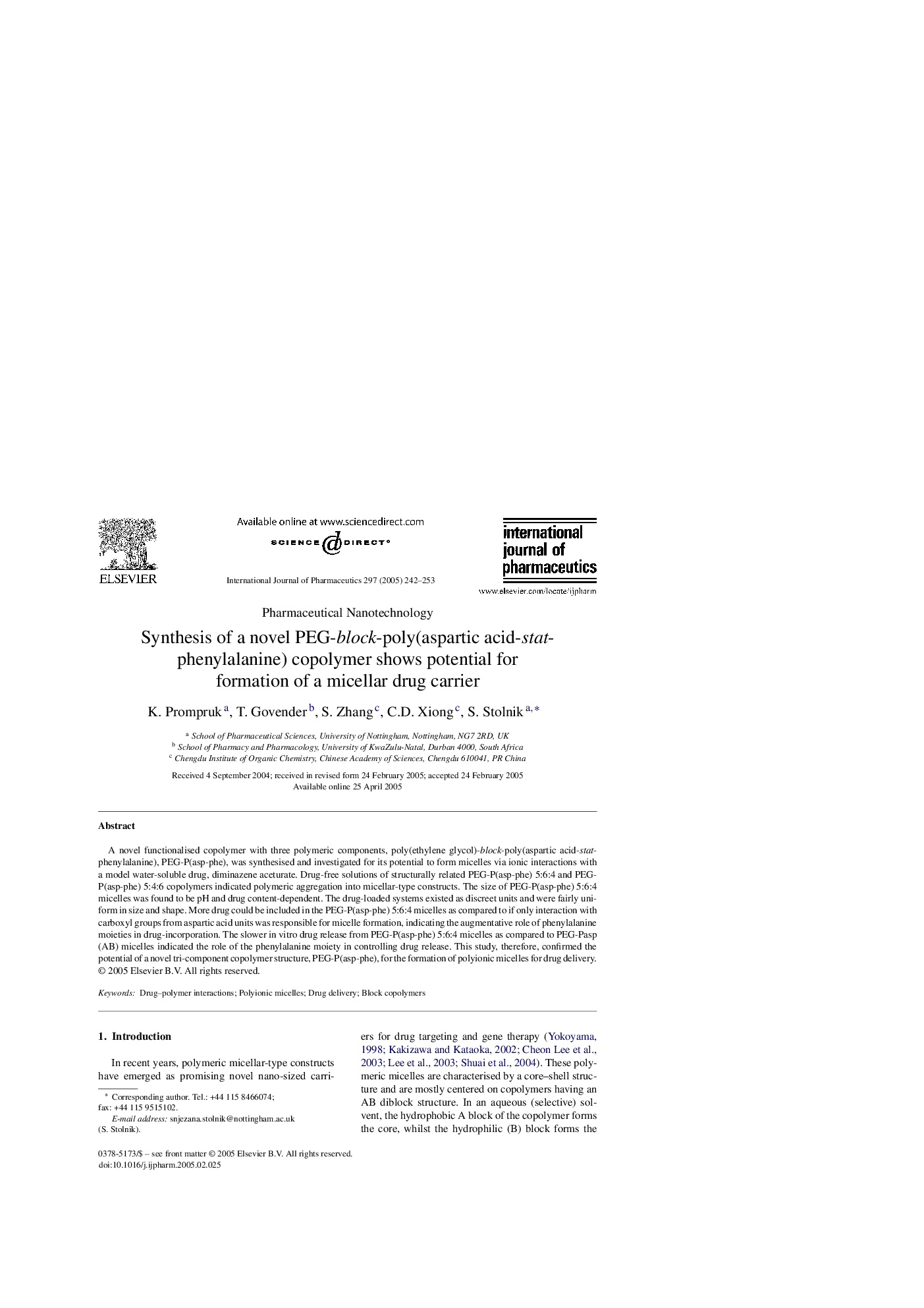| Article ID | Journal | Published Year | Pages | File Type |
|---|---|---|---|---|
| 9918784 | International Journal of Pharmaceutics | 2005 | 12 Pages |
Abstract
A novel functionalised copolymer with three polymeric components, poly(ethylene glycol)-block-poly(aspartic acid-stat-phenylalanine), PEG-P(asp-phe), was synthesised and investigated for its potential to form micelles via ionic interactions with a model water-soluble drug, diminazene aceturate. Drug-free solutions of structurally related PEG-P(asp-phe) 5:6:4 and PEG-P(asp-phe) 5:4:6 copolymers indicated polymeric aggregation into micellar-type constructs. The size of PEG-P(asp-phe) 5:6:4 micelles was found to be pH and drug content-dependent. The drug-loaded systems existed as discreet units and were fairly uniform in size and shape. More drug could be included in the PEG-P(asp-phe) 5:6:4 micelles as compared to if only interaction with carboxyl groups from aspartic acid units was responsible for micelle formation, indicating the augmentative role of phenylalanine moieties in drug-incorporation. The slower in vitro drug release from PEG-P(asp-phe) 5:6:4 micelles as compared to PEG-Pasp (AB) micelles indicated the role of the phenylalanine moiety in controlling drug release. This study, therefore, confirmed the potential of a novel tri-component copolymer structure, PEG-P(asp-phe), for the formation of polyionic micelles for drug delivery.
Related Topics
Health Sciences
Pharmacology, Toxicology and Pharmaceutical Science
Pharmaceutical Science
Authors
K. Prompruk, T. Govender, S. Zhang, C.D. Xiong, S. Stolnik,
